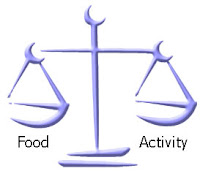Have you ever lost a lot of weight and then gained most of it back? Maybe you even gained back all of it and then some. If so, you are not alone. This is because the behaviors that help you lose weight are not necessarily the ones that keep it off. Also, the more weight you lose, the more difficult it is to keep it off!
To learn more about how people succeed at weight maintenance, the National Weight Control Registry (NWCR) was started. The NWCR is tracking over 10,000 people who lost weight and kept it off. Every year, they are asked about their behaviors and the strategies they use to maintain their weight loss.
One thing the NWCR has learned is that there is no single recipe for successful weight loss. About half of all registrants lost weight with some type of program, and the other half lost the weight on their own. Almost all of them modified their food intake (98%) and most also increased physical activity (94%).
Not surprisingly, the most common exercise for weight loss was brisk walking. Walking is easy to do without a gym membership or fancy equipment. You can do it anywhere in the world, at home or when traveling. Just make sure you are walking fast enough to challenge yourself. You can use the sentence test, where you have to take a few breaths to complete a sentence, but not a breath for every word.
To keep off the weight, there seem to be 4 behaviors in almost every success story.
- EAT BREAKFAST EVERY DAY. If you are looking for easy breakfast ideas, read our recent post about healthy breakfast choices at: http://www.scalivingwell.blogspot.com/2012/08/breakfast-ideas-healthy-easy-and-quick.html
- WEIGH YOURSELF AT LEAST ONCE PER WEEK. The success stories keep an eye on their weight, and they make small adjustments in their daily choices so that a two pound gain doesn’t creep up to ten pounds or more. Weighing yourself is one way that it is important to “know your numbers.”
- WATCH LESS THAN 10 HOURS OF TV PER WEEK. If you have a sedentary job, make the most of your time away from work by doing something physical in your time off. If you need to sit and relax for a bit, listen to some music or read a book. Both options are better for your body and your brain than TV.
- EXERCISE. On average, weight maintainers exercise one hour per day. That may seem like a lot, but any exercise is better than none. Find activities you enjoy like taking a long hike, going for a bicycle ride, or walking the course when you play golf. Remember, don’t sell yourself short. Lifestyle physical activities (mowing the lawn with a push mower, cutting wood and cleaning the house) should figure in to your total exercise plan. Try challenging yourself physically during these activities (breathing hard) for the greatest benefit.
Have you lost weight and want to share information about how you did it? If you have lost 30 pounds or more and kept it off for at least one year, you are eligible to join the NWCR. Sign up at: http://www.nwcronline.com/join.aspx
To find out more about the research, go to: http://www.nwcr.ws/Research/default.htm
To read about the success stories, visit: http://www.nwcr.ws/stories.htm
If you would like assistance with weight loss or weight maintenance, join our free coaching program. Contact Dr. Haaz at shaaz@corporatehealthsolutions or 443-801-0539 for more information.













